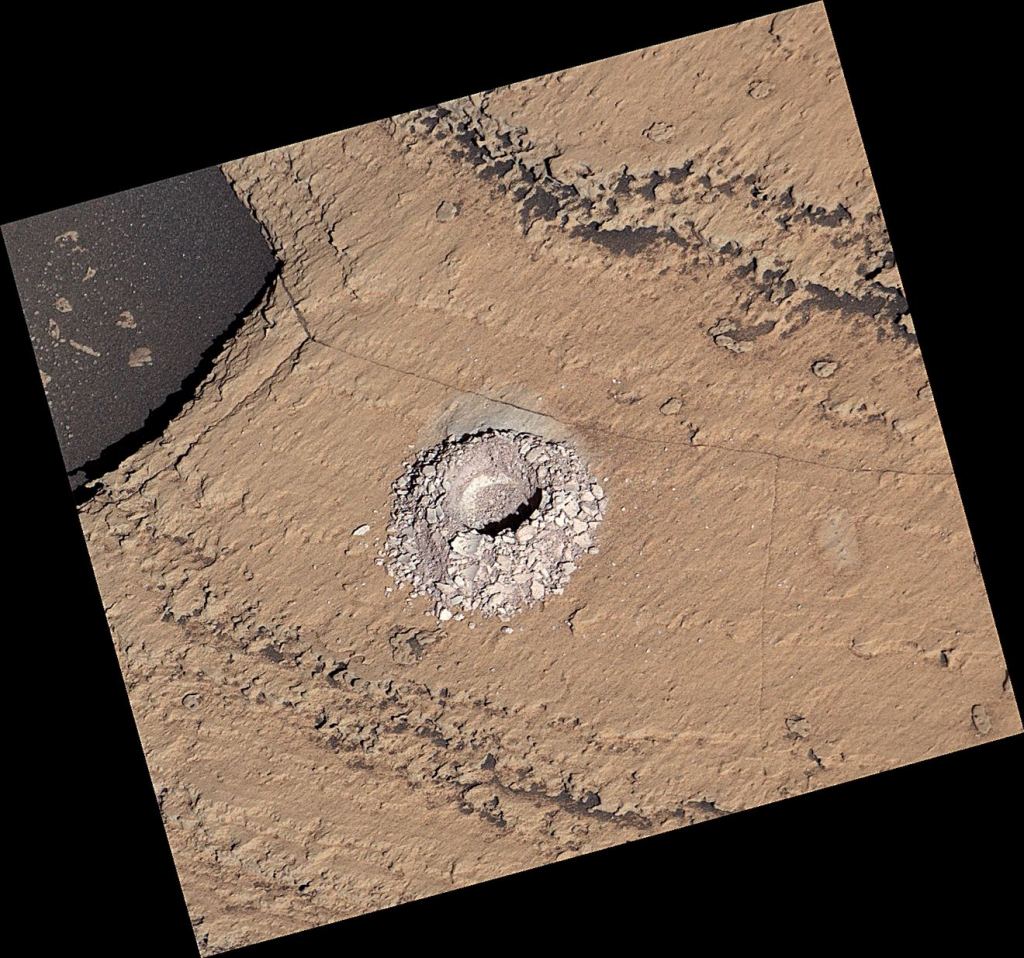Not to make anyone feel old, but it’s been over 11 years since NASA’s Curiosity Rover landed on Mars. The rover has now seen the sun rise on Mars over 4,000 times. During this time, the rover has driven almost 32 kilometers on Mars, making its way up the flanks of Mount Sharp while studying the ancient history of water on Mars.
The past 11 years have been quite the journey, but it hasn’t been all perfect. There have been a few computer glitches over the years, Curiosity’s wheels have gaping holes and gashes from driving over sharp rocks, and recently one of its camera filter wheels became stuck. But since the rover’s nominal mission was designed to last about two Earth years, Curiosity has proven to be a tough and enduring machine.
Curiosity landed on Mars on August 5, 2012. Equipped like a geologist, it has been studying the landscape, using its “rock hammer” (i.e., drill) to look inside rocks and then study them with onboard tools. Curiosity has now drilled for 39 samples, which have been analyzed inside its tiny onboard lab. It’s mission: determine if ancient Mars ever had the conditions to support microbial life.
The latest sample was collected from a rock nicknamed “Sequoia” (JPL explains that all of the mission’s current science targets are named after locations in California’s Sierra Nevada). This region of the 5-km (3 mile)-tall Mount Sharp where Curiosity is currently traveling appears be rich in sulfates. These are minerals that likely formed in salty water that was evaporating as Mars first began drying up billions of years ago. At some point, Mars’ liquid water disappeared for good.
 NASA’s Curiosity Mars rover used the drill on the end of its robotic arm to collect a sample from a rock nicknamed “Sequoia” on Oct. 17, 2023, the 3,980th Martian day, or sol, of the mission. The rover’s Mastcam captured this image. Credit: NASA/JPL-Caltech/MSSS
NASA’s Curiosity Mars rover used the drill on the end of its robotic arm to collect a sample from a rock nicknamed “Sequoia” on Oct. 17, 2023, the 3,980th Martian day, or sol, of the mission. The rover’s Mastcam captured this image. Credit: NASA/JPL-Caltech/MSSSAs Curiosity climbs the mountain, it has been sampling the various layers that formed over time. These layers are like the pages of history, which reveals information of how the climate changed over time.
“The types of sulfate and carbonate minerals that Curiosity’s instruments have identified in the last year help us understand what Mars was like so long ago. We’ve been anticipating these results for decades, and now Sequoia will tell us even more,” said Ashwin Vasavada, Curiosity’s project scientist.
 NASA’s Curiosity captured this 360-degree panorama while parked below Gediz Vallis Ridge (seen at right), a formation that preserves a record of one of the last wet periods seen on this part of Mars. After previous attempts, the rover finally reached the ridge on its fourth try. Credits: NASA/JPL-Caltech/MSSS.
NASA’s Curiosity captured this 360-degree panorama while parked below Gediz Vallis Ridge (seen at right), a formation that preserves a record of one of the last wet periods seen on this part of Mars. After previous attempts, the rover finally reached the ridge on its fourth try. Credits: NASA/JPL-Caltech/MSSS.Seeing the landscape – and sending pictures of Mars to Earth — is also a big part of Curiosity’s mission. The Mastcam camera (located on the top of the mast) gives us a human eye-level view, and it recently has been experiencing an issue. The two 34 mm focal length cameras have filters arranged on a wheel that rotates under each camera’s lens. Since Sept. 19, the left camera’s filter wheel has been stuck between filter positions, the effects of which can be seen on the mission’s raw, or unprocessed, images. Engineers are working on ways to try to nudge the filter wheel back toward its standard setting. Not being able to fix it means there is a degraded ability to observe the detailed color spectra of rocks from afar.
Other things engineers are keeping eye on includes monitoring the performance of the rover’s nuclear power source – which should provide enough energy to operate for many more years. They have also found ways to overcome challenges from wear on the rover’s drill system and robotic-arm joints. Software updates have fixed bugs and added new capabilities to Curiosity, too, making long drives easier for the rover and reducing wheel wear.
Happy 4,000th sol on Mars, Curiosity! Wishing you many more.

